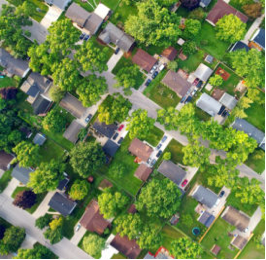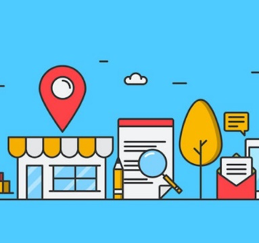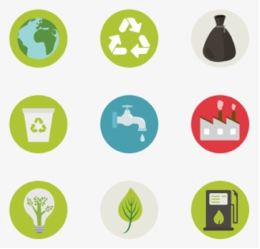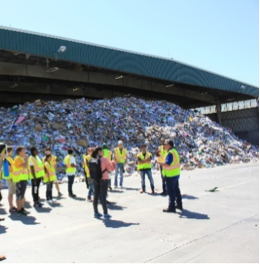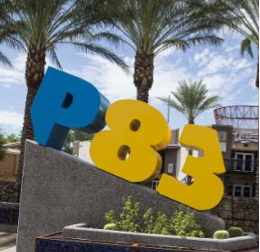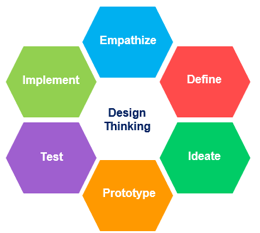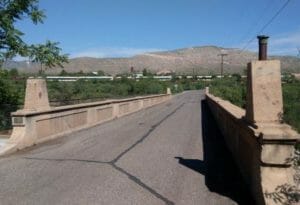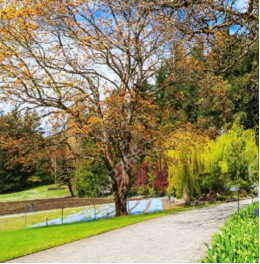Project Cities managed twelve new projects for the fall 2020 semester. There are various project topics, including sustainability park planning, P83 revitalization visioning, solid waste management, and a layered approach to Covid-19 response planning. Some projects are being carried on from the past semester, and others are new, or individual capstone applied research projects.
Project: Covid-19: Community needs assessment
Community: City of Peoria
Class: JUS 385: Justice and Everyday Life
School: School of Social Transformation
Student group: Undergraduate
About the project: Considering the Covid-19 pandemic, local governments have sprung into action to serve their residents in a variety of new and unexpected ways. Peoria recognizes that adequately meeting their residents’ needs during this time will require flexibility and the ability to pivot quickly. This project will examine Peoria residents’ lived experience through the Covid-19 pandemic and then work with community organizations to help identify local resources that can fill gaps in met vs. unmet needs.
Goals:
- Conduct a series of focus groups and structured interviews with stakeholders and constituents in Peoria.
- Code the qualitative responses and conduct a network analysis to identify needs, gaps in need, and availability of resources.
Project: Urban forestry program development
Community: City of Peoria
Class: SOS 582: Project Management for Sustainability
School: School of Sustainability
Student group: Graduate
About the project: In the context of rising urban heat, cities and towns are beginning to better understand and appreciate the value and necessity of incorporating shade into urban spaces, especially when it comes from natural sources like trees. Shade is essential for increasing comfort and walkability and helps to decrease the urban heat island effect. The City of Peoria seeks to enhance its shade master planning efforts by developing a new urban forestry program’s foundation.
Goal: Develop a comprehensive project plan (to be implemented in spring 2021) by conducting an initial investigation into the context of community forestry in Peoria.
Project: Covid-19: Local business impact analysis
Community: City of Peoria
Class: PUP 642: Urban and Regional Economic Analysis
School: School of Geographical Sciences and Urban Planning
Student group: Graduate
About the project: The pandemic has dealt a significant blow to small, local businesses in towns and cities across the country. Like in other communities, Peoria’s businesses have seen a high degree of uncertainty, increased costs, and decreased revenues. Peoria’s local businesses are essential to the City’s economy and other City priorities, such as building a sense of place. Students will work with the City to identify local businesses’ issues and develop recommendations for the City from an urban planning perspective.
Goal: Assess the impacts of COVID-19 on Peoria’s business community and local economy and provide recommendations based on academic literature.
Project: Sustainability planning outreach
Community: City of Peoria
Class: EMS: 589: Master of Sustainability Leadership capstone prep
School: College of Global Futures
Student group: Undergraduate, graduate
About the project: Guided by the City’s Sustainability Action Plan 2.0, Peoria is a regional leader in sustainability planning. The City is now making plans to develop a version 3.0 of the plan, with improved metric tracking and public input analysis. Following the work of a spring 2020 class, students are now tasked with developing and implementing an outreach campaign for public comment. Students will then analyze the input and assist Peoria staff in preparation for developing the next version of the sustainability plan.
Goal: Coordinate with Peoria staff to coordinate and execute a public outreach campaign to identify resident priorities and values.
Project: Sustainable Waste Management
Community: City of Peoria
Class: ERM 432/532: Sustainable Solid Waste Management
School: Ira A. Fulton Schools of Engineering, The Polytechnic School
Student group: Undergraduate and graduate
About the project: Recycling raw materials is a complex process with unique logistical challenges for each material type. Additionally, recyclable materials may not necessarily be recycled if there is no viable reuse market for any material. Peoria’s Public Works Department has requested ASU support in exploring whether they can connect the dots for two new types of materials: textiles (such as clothing and shoes) and extruded polystyrene (aka “Styrofoam”). Students will examine the reuse market for these materials and explore cases of other communities that have successfully implemented textile and extruded polystyrene recycling programs.
Goal: Investigate the utility of investing in a recycling program for unique materials like Styrofoam and textiles that are not currently allowed in the recycle bin.
Project: P83 urban village visioning
Community: City of Peoria
Class: PUP 593: Applied Project
School: School of Geographical Sciences and Urban Planning
Student group: Capstone, independent student
About the project: Keith Morphis will examine the existing conditions and redevelopment opportunities for the City’s P83 district. Morphis will research relevant case studies and explore opportunities to convert the P83 district into an Urban Village concept. The concept would contribute to the City’s larger goals and initiatives around placemaking. Building upon priorities established by the City in earlier projects, this project aims to help reorient the district into a more walkable, livable district for residents who live in and outside the P83 district.
Goals:
- Conduct a visioning study on the P83 district that conceptualizes the space as an “Urban Village.” Include a specific examination of connectivity between “nodes” of the district.
- Examine academic and professional literature, case studies, and stakeholder input to inform this vision.
Project: Covid-19: Messaging review
Community: City of Peoria
Class: COM 415: Risk Communication
School: School of Social and Behavioral Sciences
Student group: Undergraduate
About the project: The COVID-19 pandemic has necessitated unprecedented expectations on municipal entities to assume new leadership roles and absorb an array of new emergency services. One unique challenge this places on Peoria’s staff is effectively communicating with the public about this crisis. There is significant literature on the communication mechanisms that are most effective in emergencies to convey imperative safety information and spur action without evoking fear or backlash. Students will examine a sample of Peoria’s COVID-19-related communications and provide recommendations based on the academic literature on crisis communication.
Goals:
- Produce a “Risk and Ethics” case analysis report to Peoria, which examines legal and ethical considerations associated with COVID-19 communication.
- Evaluate COVID-related messaging deployed by Peoria during the pandemic; critique content, and provide future messaging recommendations.
- Conduct a visualization of risk activity that examines linguistic devices and framing of COVID-19-related messaging.
Project: Smart towns: Smart parks
Community: Town of Clarkdale
Class: FSE 104/404: EPICS Gold
School: Ira A. Fulton Schools of Engineering
Student group: Undergraduate
About the project: Despite the community’s historic main street feel, the community aspires to be a more digitally connected, modern town. The Town of Clarkdale seeks to activate two public parks with new digital infrastructure, such as public wi-fi, a built-in PA system, etc. Students will consult with the Town on the community’s needs and develop strategic recommendations via the EPICS program’s unique version of the “Design Thinking” model.
Goal: Examine Clarkdale Town Park and Selna/Moglini Park for opportunities to integrate smart technology into the parks’ hardscape.
Project: Smart towns: Infrastructure needs assessment
Community: Town of Clarkdale
Class: FSE 104/404: EPICS Gold
School: Ira A. Fulton Schools of Engineering
Student group: Undergraduate
About the project: As Clarkdale continues to grow, technology also continues to advance. To attract modern businesses and residents, the town must improve its internet infrastructure. The town is currently experiencing lower-than-desired bandwidth, and there are no connection redundancies, which makes Clarkdale vulnerable to a loss of service in case of emergency. New fiber infrastructure is proposed to connect with Clarkdale and other towns in the valley with a new line from the north in the near future. At the same time, the Town needs to activate a new organizational infrastructure that requires higher bandwidth. Students will consult with the Town on the community’s needs and develop strategic recommendations via the EPICS program’s unique version of the “Design Thinking” model.
Goal: Examine the current status for the Town of Clarkdale, then assess current needs. Analyze the needs gap and identify strategies to better meet Clarkdale’s needs.
Project: Historic bridge expansion study
Community: Town of Clarkdale
Class: FSE 104/404: EPICS Gold
School: Ira A. Fulton Schools of Engineering
Student group: Undergraduate
About the project: The historic Bitter Creek/Broadway bridge is a single-lane bridge that serves as the primary means of connecting downtown Clarkdale with the Verde Canyon Railroad and residences on the north side of town. The bridge is a historic asset for the community. However, the bridge doesn’t meet a contemporary town’s needs, especially as it serves as the sole means of accessing these major tourist destinations. Additionally, as the bridge ages, its structural integrity needs to be evaluated to ensure user safety.
Goals:
- Conduct a structural engineering assessment of the bridge that assesses the structure’s ability to continue serving its function safely and more efficiently.
- Conduct a traffic study that measures and analyzes typical vehicle traffic on the bridge.
- Explore bridge expansion opportunities that preserve the historic character.
Project: Affordable housing study
Community: Town of Clarkdale
Class: PAF 509: Public Affairs Capstone
School: School of Public Affairs
Student group: Graduate
About the project: Clarkdale, like many other communities, struggles to ensure the availability of affordable, appropriate housing. Additionally, existing housing stock is largely limited to single-family homes that are not appropriate for single people or smaller families. There is a larger conversation region-wide about this issue, and the Town of Clarkdale seeks ASU support to investigate further into the context for attainable housing and strategic recommendations based on academic literature and best practices in the field.
Goals:
- Research the policy context around attainable housing in the Town of Clarkdale.
- Examine strategies and frameworks from the academic literature that can help Clarkdale to conceptualize the problem.
- Research state and federal programs that can be leveraged to support attainable housing in Clarkdale
Project: Sustainability Park Plan
Community: Town of Clarkdale
Class: SOS 498/598: Urban Sustainability Applications
School: School of Sustainability
Student group: Undergraduate and graduate
About the project: Clarkdale is the owner of a large 100-acre parcel of land, gifted to the Town, pursuant to a “Sustainability Park” proposal. The Town seeks to leverage this space for industrial-scale sustainability operations like solar energy generation or green waste management and a publicly accessible education and outdoor recreation area. The concept has support from the council and the community, as it fits Clarkdale’s character as a sustainable community. However, the plan, which was created in 2010, needs to be updated and operationalized. Students are tasked with updating the plan with a revised vision, informed by contemporary sustainability practices, concepts, and ideas.
Goals:
- Develop additional options for park features or installations.
- Assess the viability and relevance of proposed park features.

